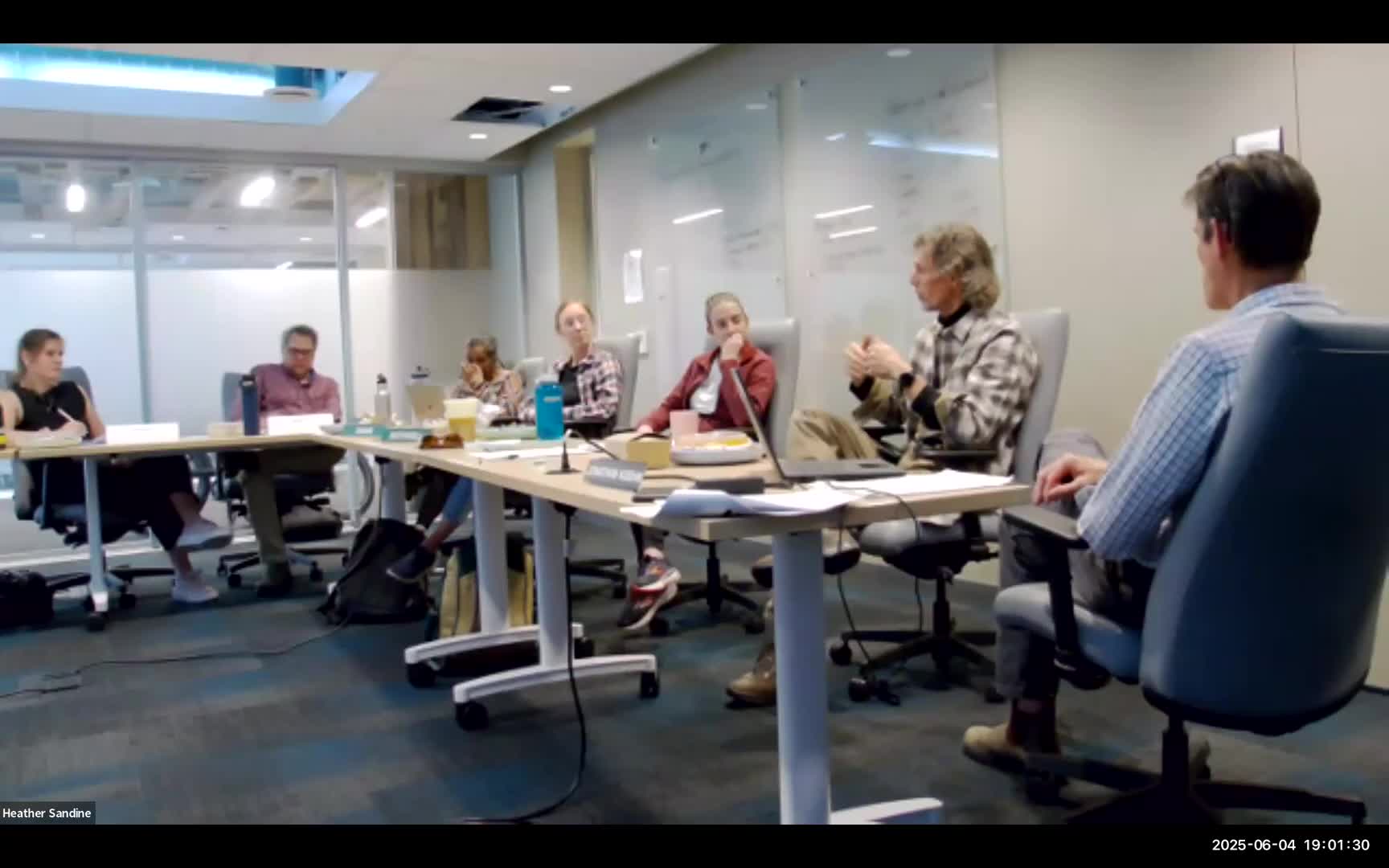Boulder Council develops climate resilience initiative for wildfire and biodiversity
June 07, 2025 | Boulder, Boulder County, Colorado
This article was created by AI summarizing key points discussed. AI makes mistakes, so for full details and context, please refer to the video of the full meeting. Please report any errors so we can fix them. Report an error »

In a recent Boulder City Environmental Advisory Board meeting, discussions centered on innovative strategies to enhance climate resilience and wildfire safety in the community. The atmosphere was charged with a sense of urgency and collaboration as board members explored ways to engage residents in identifying and promoting fire-resilient landscapes.
Drawing parallels to the Boulder Energy Challenge from a decade ago, the board is set to launch a new initiative aimed at encouraging community involvement in recognizing areas that excel in biodiversity, water absorption, and fire resilience. One member suggested incorporating "fire" into the initiative's name to better resonate with residents' personal safety concerns, highlighting the diverse motivations that drive community engagement—from protecting homes to nurturing local wildlife.
The meeting also touched on the city's ongoing efforts to update building codes and landscaping regulations to bolster wildfire resilience. The council has prioritized these updates, recognizing the need for a comprehensive approach that integrates various departmental interests. As discussions unfolded, it became clear that the city is committed to balancing safety with community needs, ensuring that regulations are both effective and accessible.
While outreach efforts regarding these initiatives are still in development, the board emphasized the importance of educating residents about voluntary actions they can take to enhance their home’s safety. A robust communications plan is on the horizon, aimed at guiding homeowners on practical steps they can implement, along with potential financial assistance for those ready to make changes.
As Boulder City continues to navigate the complexities of climate adaptation and wildfire preparedness, the collaborative spirit evident in this meeting reflects a community eager to take proactive steps toward a safer, more resilient future. The board's initiatives promise to not only protect the environment but also empower residents to play an active role in safeguarding their homes and neighborhoods.
Drawing parallels to the Boulder Energy Challenge from a decade ago, the board is set to launch a new initiative aimed at encouraging community involvement in recognizing areas that excel in biodiversity, water absorption, and fire resilience. One member suggested incorporating "fire" into the initiative's name to better resonate with residents' personal safety concerns, highlighting the diverse motivations that drive community engagement—from protecting homes to nurturing local wildlife.
The meeting also touched on the city's ongoing efforts to update building codes and landscaping regulations to bolster wildfire resilience. The council has prioritized these updates, recognizing the need for a comprehensive approach that integrates various departmental interests. As discussions unfolded, it became clear that the city is committed to balancing safety with community needs, ensuring that regulations are both effective and accessible.
While outreach efforts regarding these initiatives are still in development, the board emphasized the importance of educating residents about voluntary actions they can take to enhance their home’s safety. A robust communications plan is on the horizon, aimed at guiding homeowners on practical steps they can implement, along with potential financial assistance for those ready to make changes.
As Boulder City continues to navigate the complexities of climate adaptation and wildfire preparedness, the collaborative spirit evident in this meeting reflects a community eager to take proactive steps toward a safer, more resilient future. The board's initiatives promise to not only protect the environment but also empower residents to play an active role in safeguarding their homes and neighborhoods.
View full meeting
This article is based on a recent meeting—watch the full video and explore the complete transcript for deeper insights into the discussion.
View full meeting
